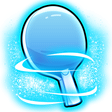Handling balls aimed at the crossover point
Training
Kevin Rogers Asked 1 year ago
We are often encouraged to aim at our opponent's crossover point. What should we do when our opponent hits towards our crossover point? What are some good drills for handling this situation?
 Alois Rosario Answered 1 year ago
Alois Rosario Answered 1 year ago
Hi Kevin,
Handling balls aimed at your crossover point is a crucial skill in table tennis. Here are some strategies and drills you can use to better handle shots directed at your crossover point.
Improve your ability to anticipate the ball's direction by watching your opponent's racket angle and body positioning. Good footwork is key in getting yourself into the correct position to play either a forehand or backhand stroke. Use small sidestep movements to adjust your position quickly.
Make a quick decision on whether to play a forehand or backhand. A rule of thumb is to use your forehand if the ball is coming to the right of your playing elbow (for right-handed players) and backhand if it's to the left, although this can vary depending on your stance and playing style.
Have a training partner or coach play balls randomly to your forehand, backhand, and crossover point while you maintain a neutral stance. Focus on adjusting your feet and rotating your hips to play the appropriate stroke.
Multiball Training: Using multiball is an excellent way to improve reactions at the crossover point. Have a coach feed balls to different areas, including your crossover, at varying speeds and spins to enhance your adaptability.
Without the ball, practice the footwork and stroke movements required for responding to balls at the crossover point. This helps develop muscle memory for better execution during match play. By practicing these strategies and drills, you can better prepare to handle balls played at your crossover point. Remember, the key is to stay balanced, make quick decisions, and have efficient footwork to adjust your position for the optimal stroke.
Recommended Video
Backhand and Forehand Push
In lesson 5 we work on the forehand and backhand push strokes. These are defensive strokes that utilise backspin to make it hard for your opponent to attack.
Watch NowThoughts on this question
Become a free member to post a comment about this question.
If you don't have enough time to move both of your feet together which is preferred another option is to pivot backwards on your forehand side to create a little extra space for your forehand.
Kevin Rogers Posted 1 year ago
Thanks for your comments. Another option could be to drop back a little when counter hitting to provide more time to move laterally or pivot. However, this does not work well when looping backspin, as this often has to be done near the table. I often get caught cramping my forehand loop. I will try the drills.